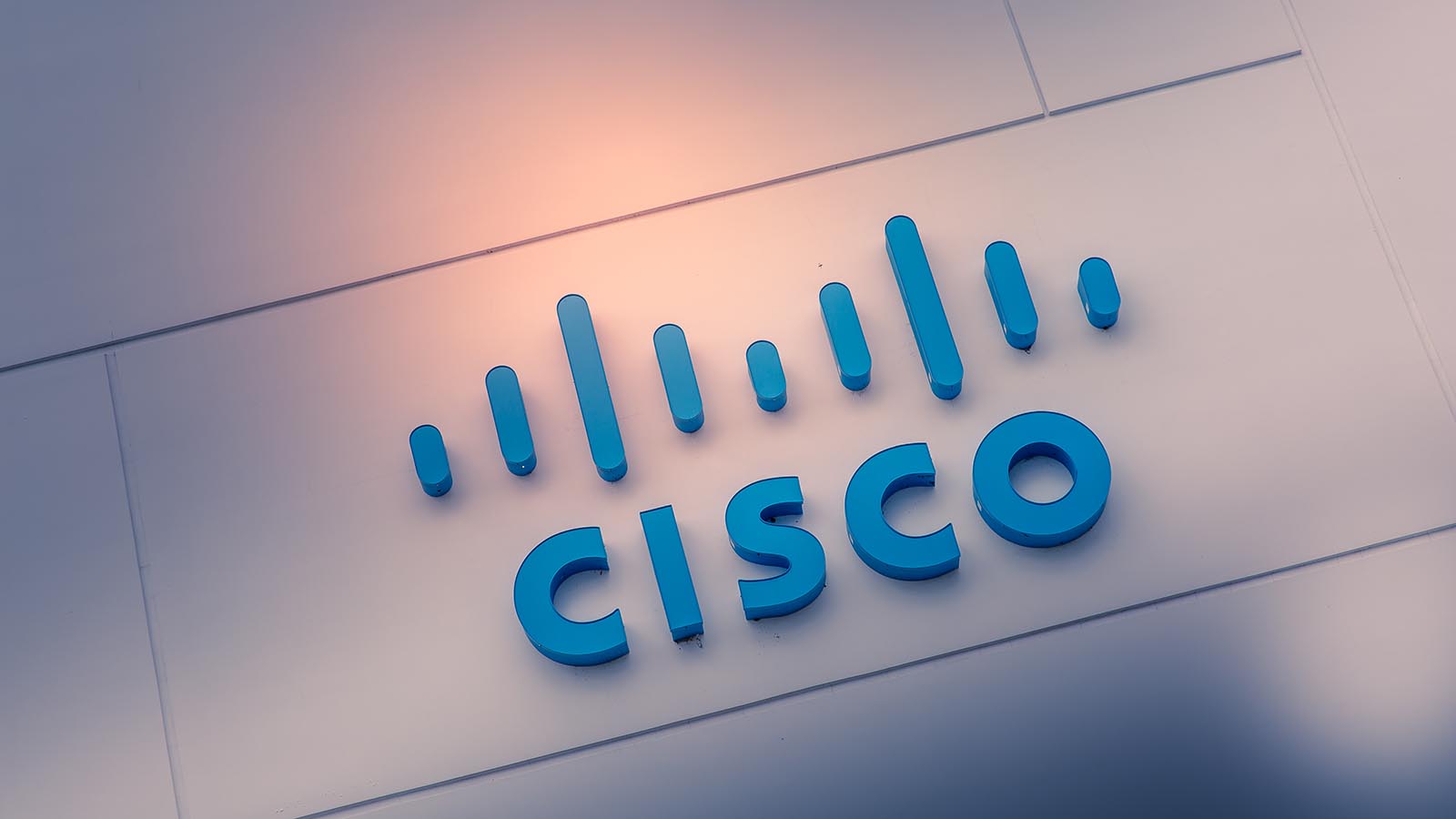During the last year, when I was feeling defensive on the market, I bought some Cisco Systems (NASDAQ:CSCO) stock.

Cisco, which has dominated the networking market for decades, has given me very little back. Including dividends, I’m up about 3%.
Analysts have been watching this slow growth for years. While other tech giants have rocketed upward, Cisco has just met the market. It opened for trade Jan. 24 at about $49/share, a price to earnings ratio of 19.5, and a dividend yielding 2.86%.
“Show me,” the critics say. Show me what? Cisco has 31% of the market for IP endpoints, 20% ahead of anyone else. If there’s a phone market, Cisco dominates it. Trouble is no one believes in phones anymore.
Cisco Stock Strategy
Cisco has been putting its money into add-on networking software it can sell by subscription, and a chip set called Silicon One, for handling the next decade’s network applications.
This has analysts pounding the table for Cisco stock, with two-thirds rating it either a “buy” or “strong buy.” It’s been too cheap for too long, they argue. Its rebound has just begun.
Certainly, Cisco has been hit hard by the trade war, which has mainly benefited Chinese rivals like Huawei. Huawei hardware is cheaper, it gets the largest market to itself, and it’s winning big contracts in Europe on price and anti-American animus. Cisco has cut back operations in China but has publicly called the impact “very minimal.” CEO Chuck Robbins calls it all a “shallow pause.”
Why I Like Cisco
Robbins, born in a former country town turned Atlanta suburb, will celebrate five years at the helm in July, having succeeded the legendary John Chambers. He has had to negotiate two industry transitions, from hardware to software, and from boxed devices to chips. He has kept Cisco humming and profitable, but the politics of the Internet have not helped.
Cisco needs big customers to thrive, telcos and scaled enterprises that use Internet contracting as politics by other means. The move into security software has made it as vulnerable to emergency patches as anyone else.
Growth is now expected from Silicon One. The new chips also change Cisco’s target market from telcos to the Cloud Czars, companies like Amazon (NASDAQ:AMZN), Microsoft (NASDAQ:MSFT) and Alphabet (NASDAQ:GOOGL). This is a good thing.
As Mitch Wagner of Light Reading notes, the company’s new direct strategy puts it in competition with suppliers like Broadcom (NASDAQ:AVGO). It also transforms and unifies Cisco’s product line, drawing together five different chip architectures into one, hence the name.
To make its transitions work, Cisco has been constantly in acquisition mode. Its latest buy is Exablaze Systems, an Australian maker of Field Programmable Gate Arrays (FPGAs), which will go into its Nexus networking gear. Exablaze was Cisco’s sixth acquisition of 2019. This followed six deals in 2018, and nine in 2017. Such deals bleed capital, but they maintain competitiveness.
The Bottom Line
Cisco is at the center of nearly every fast-growing technology 2020 offers.
It’s in the 5G transition to wireless ubiquity. It’s in the fast-growing security market. It’s keeping up with the cloud transition and joining the rush of suppliers to design their own silicon.
I don’t expect Cisco to explode with growth as others do. I see it as a purely defensive play within the technology sector. It’s able to cover its dividend with income and has enough cash to cover its debt twice over, with a stock that can keep funding acquisitions.
Don’t expect excitement from Cisco stock. Expect steady gains and you won’t be disappointed.
Dana Blankenhorn is a financial and technology journalist. His latest book is Technology’s Big Bang: Yesterday, Today and Tomorrow with Moore’s Law, essays on technology available at the Amazon Kindle store. Write him at danablankenhorn@gmail.com or follow him on Twitter at @danablankenhorn. As of this writing he owned shares in MSFT and AMZN.
